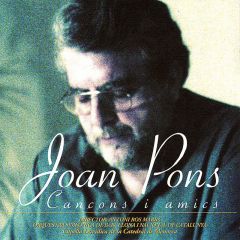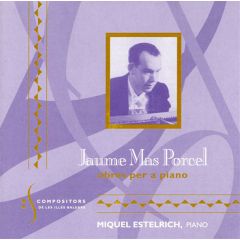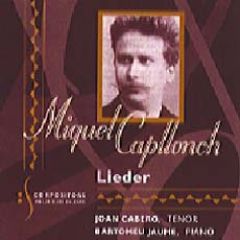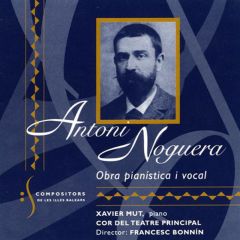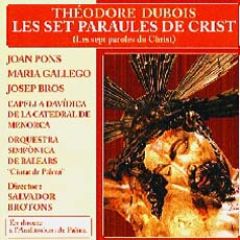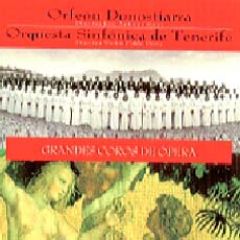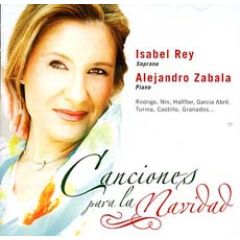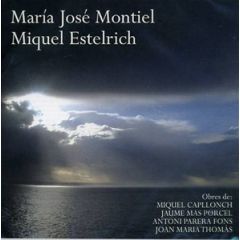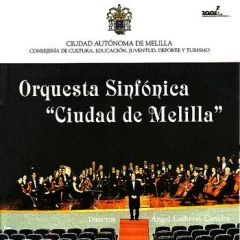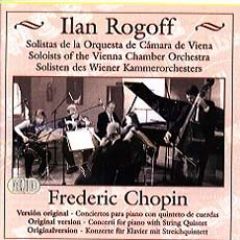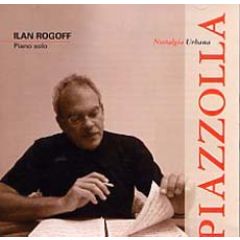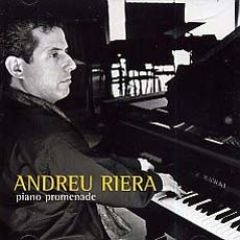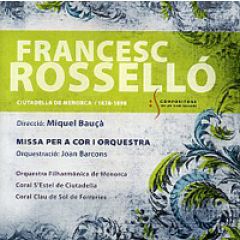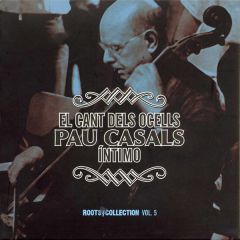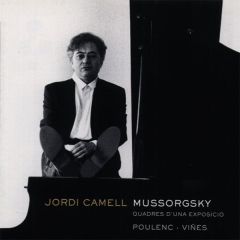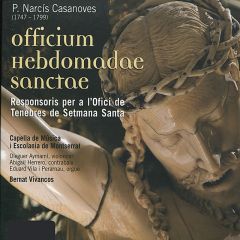FICHA PRODUCTO
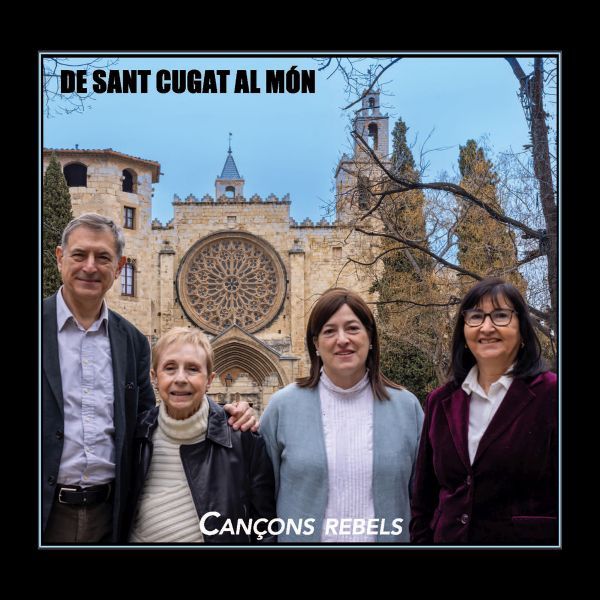
De Sant Cugat al món - Cançons rebels
MERCÈ TORRENTS-SALVADOR BROTONS -CARME TALLEDA
CD
CLASSICAL / CONTEMPORARY
COLUMNA MUSICA (COM0466 02)
8429977104665
CARME TALLEDA I OLIVERAS
The first block of my songs, with my own lyrics and music, belongs to my first period as a composer.
They are inspired by personal experiences and at the same time by the mystical and fantastic worlds that accompany me in the creative process until today.
The song “Persistirem” (“We will persist”), which marks the beginning of my second and current stage of creation, is dedicated to Blanca Bragulat and Jordi Turull. It is a hymn to the resilience of the Catalan people, understood as a force of Nature.
The Tres cançons criolles (Three Creole Songs), dedicated to my dear friend Salvador Brotons, are an invocation to the fantasy world I mentioned at the beginning. In the first one, “Non-non per a l’eternitat” (“Lullaby for eternity”), the Phoenician and Mediterranean goddess Astarte sings to her son, conceived with a human, to give him immortality. The second is a hymn to the joy of loving surrender, and the third consists of a dialogue with my own death, imagined as a sorceress.
MERCÈ CORRETJA I TORRENTS
“La nit” (“The night”) and “Es desperta una promesa d’estiu” (“A summer promise wakes up”) are two songs composed by my mother, Mercè Torrents i Turmo, on poems of mine. “La nit” belongs to the co llection Sensivitat, which won the Ciutat d’Olot Poetry Prize in 1979. “Es desperta una promesa d’estiu” belongs to the collection La jungla, which was finalist to the Amadeu Oller Prize in 1984.
I wrote the poems of Sensivitat after returning from a weekend in the Priorat region of Tarragona, spent at the home of some friends. I was impressed by the austerity of the landscape: the vineyards, the fig trees, the olive trees, its dryness, the howling of the night wind and the transforming capacity of the rain.
I later used these memories to convey the idea of change: the passage from day to night, from sadness to joy, from darkness to life. The music underlines the intimate nature of the poem and highlights some key words such as “life” or “wind” giving the song a mysterious air.
“Es desperta una promesa d’estiu” also speaks of rain, but as in the prelude to summer and the days to come. It is a journey towards the light. The music begins with a great deal of simplicity and develops into a sweet and very lyrical melody.
The two songs on poems by Salvador Espriu, “Ramats d’estrelles” (“Flock of stars”) and “Nua llum d’al ba” (“Naked dawn light”) are part of the compilation Final del Laberint, which my mother set to music in its entirety in 1968, for voice and piano, and which includes 21 songs for soprano and mezzo-soprano, as well as 9 recited poems.
The song “Ramats d’estrelles” was premiered by Maria D. Laffitte in 1970 at the University of Montpe llier, at the Congress of Romance Languages, accompanied on piano by my mother, while “Nua llum d’alba” was premiered by the soprano Maria dels Àngels Sarroca in 1986.
The book Final del Laberint is considered one of Salvador Espriu’s most lyrical and enigmatic collec tions, as it contains abundant symbolism and draws from different cultures. It has been said to be a me ditation on death. In “Nua llum d’alba” the figure of the beggar is the alter ego of the poet, in search of his own self; in “Ramats d’estrelles” we find the metaphor of the shepherd and the flock, to refer to God.
My mother used to say that the poems of Final del Laberint were spiritual songs. As for the music, in “Ramats d’estrelles” we find a slight jazz influence in the rhythm and a simple melody, which underlines the words of the poem, until it slowly fades away into a humming. “Nua llum d’alba”, on the other hand, is a beautiful and very lyrical song, in which the soprano’s voice can show off to its fullest extent.
SALVADOR BROTONS I SOLER
Exactly 40 years separate the 4 cançons sobre M. Martí i Pol op. 26 from this cycle by the same poet. The motivation to choose again texts by Martí i Pol came from my fascination for the first poem that opens this cycle, “Sé que em faig vell” (“I know I’m getting old”), which I had been thinking of setting to music for a long time. It was in the month of my 60th birthday that, out of personal desire, and perhaps to reflect a little on the passage of time, I began to compose this cycle.
In order not to leave a poem alone and due to my particular admiration for Martí i Pol, I have added three other poems from the same collection (Els bells camins), thus closing a cycle with a small emotional journey.
“Sé que em faig vell” begins in the low register of the piano, dark and gloomy, following the content of the text. It grows and tenses in the central part, reaching a high and vibrant point when the poet asks: “What do I know about myself?”, to gradually return to the initial low register in the final part of the song.
“Neu” “(Snow”) follows a completely inverse process to that of the first song: it begins in the piano’s high register to achieve a cold atmosphere, evocative of snow. The central part is basically developed in the low register and acquires a funeral march character when the text speaks of the passing of time.
After a more agitated space, culminating in a climactic moment, the music melts into the high and soft register of the beginning, searching for light.
“Sempre és incert” (“It’s always uncertain”) is a contrasting song: fast and active, with a certain aggressiveness, always following the message of the poem. The piano plays a very active and virtuosic part. The harshness of life is reflected in the short , punchy beats of the music. The final part of the song is serene and relaxed in accordance with the moralizing content of the poem.
“Creixences” (“Growths”) closes the cycle and also the collection of poems Els bells camins. It is a love song to life, where the poet dives into his dreams to find a lucid and clear meaning to our existence.
Musically, it is a song with a great variety of sensations and movement, which ends with a distant atmosphere, losing itself in the high register towards what may be imagined as a heavenly journey.
Vocally speaking, this cycle is intended for high voice, soprano or tenor with a wide range (D 3 - B flat 4).
The first block of my songs, with my own lyrics and music, belongs to my first period as a composer.
They are inspired by personal experiences and at the same time by the mystical and fantastic worlds that accompany me in the creative process until today.
The song “Persistirem” (“We will persist”), which marks the beginning of my second and current stage of creation, is dedicated to Blanca Bragulat and Jordi Turull. It is a hymn to the resilience of the Catalan people, understood as a force of Nature.
The Tres cançons criolles (Three Creole Songs), dedicated to my dear friend Salvador Brotons, are an invocation to the fantasy world I mentioned at the beginning. In the first one, “Non-non per a l’eternitat” (“Lullaby for eternity”), the Phoenician and Mediterranean goddess Astarte sings to her son, conceived with a human, to give him immortality. The second is a hymn to the joy of loving surrender, and the third consists of a dialogue with my own death, imagined as a sorceress.
MERCÈ CORRETJA I TORRENTS
“La nit” (“The night”) and “Es desperta una promesa d’estiu” (“A summer promise wakes up”) are two songs composed by my mother, Mercè Torrents i Turmo, on poems of mine. “La nit” belongs to the co llection Sensivitat, which won the Ciutat d’Olot Poetry Prize in 1979. “Es desperta una promesa d’estiu” belongs to the collection La jungla, which was finalist to the Amadeu Oller Prize in 1984.
I wrote the poems of Sensivitat after returning from a weekend in the Priorat region of Tarragona, spent at the home of some friends. I was impressed by the austerity of the landscape: the vineyards, the fig trees, the olive trees, its dryness, the howling of the night wind and the transforming capacity of the rain.
I later used these memories to convey the idea of change: the passage from day to night, from sadness to joy, from darkness to life. The music underlines the intimate nature of the poem and highlights some key words such as “life” or “wind” giving the song a mysterious air.
“Es desperta una promesa d’estiu” also speaks of rain, but as in the prelude to summer and the days to come. It is a journey towards the light. The music begins with a great deal of simplicity and develops into a sweet and very lyrical melody.
The two songs on poems by Salvador Espriu, “Ramats d’estrelles” (“Flock of stars”) and “Nua llum d’al ba” (“Naked dawn light”) are part of the compilation Final del Laberint, which my mother set to music in its entirety in 1968, for voice and piano, and which includes 21 songs for soprano and mezzo-soprano, as well as 9 recited poems.
The song “Ramats d’estrelles” was premiered by Maria D. Laffitte in 1970 at the University of Montpe llier, at the Congress of Romance Languages, accompanied on piano by my mother, while “Nua llum d’alba” was premiered by the soprano Maria dels Àngels Sarroca in 1986.
The book Final del Laberint is considered one of Salvador Espriu’s most lyrical and enigmatic collec tions, as it contains abundant symbolism and draws from different cultures. It has been said to be a me ditation on death. In “Nua llum d’alba” the figure of the beggar is the alter ego of the poet, in search of his own self; in “Ramats d’estrelles” we find the metaphor of the shepherd and the flock, to refer to God.
My mother used to say that the poems of Final del Laberint were spiritual songs. As for the music, in “Ramats d’estrelles” we find a slight jazz influence in the rhythm and a simple melody, which underlines the words of the poem, until it slowly fades away into a humming. “Nua llum d’alba”, on the other hand, is a beautiful and very lyrical song, in which the soprano’s voice can show off to its fullest extent.
SALVADOR BROTONS I SOLER
Exactly 40 years separate the 4 cançons sobre M. Martí i Pol op. 26 from this cycle by the same poet. The motivation to choose again texts by Martí i Pol came from my fascination for the first poem that opens this cycle, “Sé que em faig vell” (“I know I’m getting old”), which I had been thinking of setting to music for a long time. It was in the month of my 60th birthday that, out of personal desire, and perhaps to reflect a little on the passage of time, I began to compose this cycle.
In order not to leave a poem alone and due to my particular admiration for Martí i Pol, I have added three other poems from the same collection (Els bells camins), thus closing a cycle with a small emotional journey.
“Sé que em faig vell” begins in the low register of the piano, dark and gloomy, following the content of the text. It grows and tenses in the central part, reaching a high and vibrant point when the poet asks: “What do I know about myself?”, to gradually return to the initial low register in the final part of the song.
“Neu” “(Snow”) follows a completely inverse process to that of the first song: it begins in the piano’s high register to achieve a cold atmosphere, evocative of snow. The central part is basically developed in the low register and acquires a funeral march character when the text speaks of the passing of time.
After a more agitated space, culminating in a climactic moment, the music melts into the high and soft register of the beginning, searching for light.
“Sempre és incert” (“It’s always uncertain”) is a contrasting song: fast and active, with a certain aggressiveness, always following the message of the poem. The piano plays a very active and virtuosic part. The harshness of life is reflected in the short , punchy beats of the music. The final part of the song is serene and relaxed in accordance with the moralizing content of the poem.
“Creixences” (“Growths”) closes the cycle and also the collection of poems Els bells camins. It is a love song to life, where the poet dives into his dreams to find a lucid and clear meaning to our existence.
Musically, it is a song with a great variety of sensations and movement, which ends with a distant atmosphere, losing itself in the high register towards what may be imagined as a heavenly journey.
Vocally speaking, this cycle is intended for high voice, soprano or tenor with a wide range (D 3 - B flat 4).
RELATED PRODUCTS

